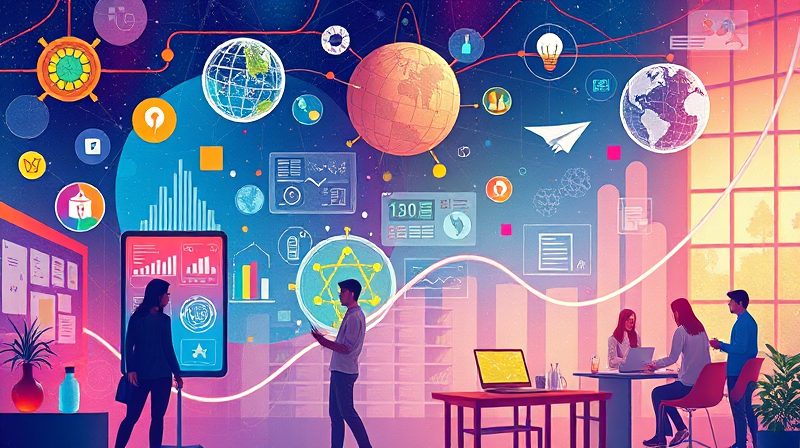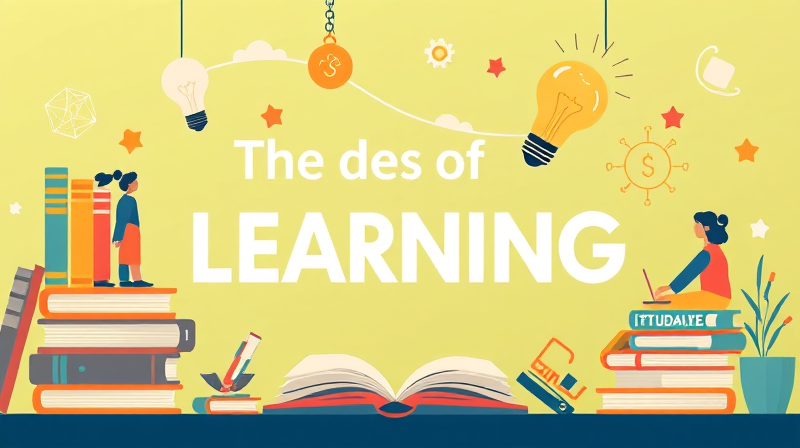In today's digital age, online networks have become an invaluable resource for acquiring knowledge, connecting with experts, and staying updated on the latest trends. The rapid evolution of technology has opened many doors for self-improvement and learning. However, balancing the benefits of these digital landscapes with the challenges of constant distractions remains a significant hurdle for both students and professionals.
Digital distractions are a serious concern. With multiple applications, notifications, and enticing multimedia content at our fingertips, maintaining focus can be a struggle. Research indicates that many users, including up to 95% of the population, face the temptation of constant interruptions. Even well-intentioned efforts at self-regulation can be overwhelmed by the lure of digital interactivity.
Strategies for Maximizing Online Learning Benefits
To tap into the vast potential of online networks while avoiding the pitfalls of distraction, consider adopting structured strategies. Creating a dedicated digital learning environment can play an essential role in keeping distractions at bay and sharpening focus.
Establish a Dedicated Workspace: One of the first steps is to create an environment that clearly distinguishes between leisure and learning. Whether it is a home office or a quiet corner in a library, this space should remain free from distractions such as television, gaming consoles, or noisy areas. The physical separation helps reinforce a mental barrier between different types of activities.
Leverage Technology Management Tools: Modern technology can work both for and against productivity. The key is to harness digital solutions like website blockers and notification managers. Self-imposed limitations through software such as SelfControl or Focus Booster can prevent access to distracting websites during scheduled learning sessions, contributing to a more concentrated and effective study period.
Adopt Time Management Techniques: Structured time management is equally important. Techniques like the Pomodoro Technique, which alternates focused work with short breaks, help maintain concentration. These methods ensure that the brain has adequate time for recuperation, thus reducing burnout and enhancing long-term retention of information.
Engage in Active Learning: Beyond passive consumption of information, active learning is a powerful approach to combating digital distractions. Participating in online study groups, interactive webinars, and discussion forums can transform solitary learning into a dynamic collaborative experience. The social interaction not only combats the isolation of online studying but also inspires deeper engagement with the material.
- Structured Environment: Dedicate an area for study to create mental separations between work and play.
- Technology Management: Use apps and tools to restrict access to distracting sites and notifications.
- Time Management: Incorporate interval-based techniques like Pomodoro to balance work and rest.
- Active Engagement: Join virtual study groups and interactive sessions to keep motivation levels high.
By incorporating these strategies, both individuals and institutions can reap the full benefits of the vast online knowledge ecosystem.
The impact of artificial intelligence on education is another promising area. AI is not only transforming the way data is processed but also enhancing personalized learning experiences. As technology continues to evolve, AI can be harnessed to filter and provide customized educational content, drawing learners into more focused and efficient learning sessions.
Modern AI-driven platforms now assist users by extracting structured information from unstructured data, automating the organization of study materials, and even suggesting learning paths tailored to individual needs. This shift toward an AI-enhanced learning model has the potential to reduce the overwhelming feeling of navigating vast amounts of information online.
Educational institutions and workplaces are progressively understanding and implementing these advances. Many schools and organizations have started to adapt policies that restrict the use of social media and other distracting platforms during critical learning periods. These measures are not meant to stifle creativity; rather, they serve as protective frameworks to keep learners and employees focused on their goals.
The ongoing challenge, nevertheless, lies in striking the right balance. As we integrate cutting-edge technology into our everyday routines, it is crucial to develop habits that minimize the lure of distractions. Whether you're a student who needs quiet time to study or a professional juggling tasks in a bustling digital environment, implementing these practical strategies can lead to substantial improvements in productivity and overall well-being.
Ultimately, finding balance in the digital landscape is not about eliminating distractions altogether but rather about building resilience against them. With a clear headset on your study environment, a robust set of technology management tools, and strategic time management techniques, you place yourself in a position to harness the true potential of online networks.
Let this be a reminder: the goal is to thrive by using technology in a way that serves your broader objectives. Every online interaction and digital tool has the potential to empower learning when used mindfully. It is a journey of continuous adjustment and self-improvement, one where every small win in focused study builds the foundation for a more knowledgeable, productive future.
By diligently applying these principles, individuals can build a lifestyle that efficiently amalgamates the advantages of digital learning with the discipline necessary to avert distractions. In doing so, they not only improve their academic or professional performance but also foster a lifelong habit of self-driven, inspired learning.








